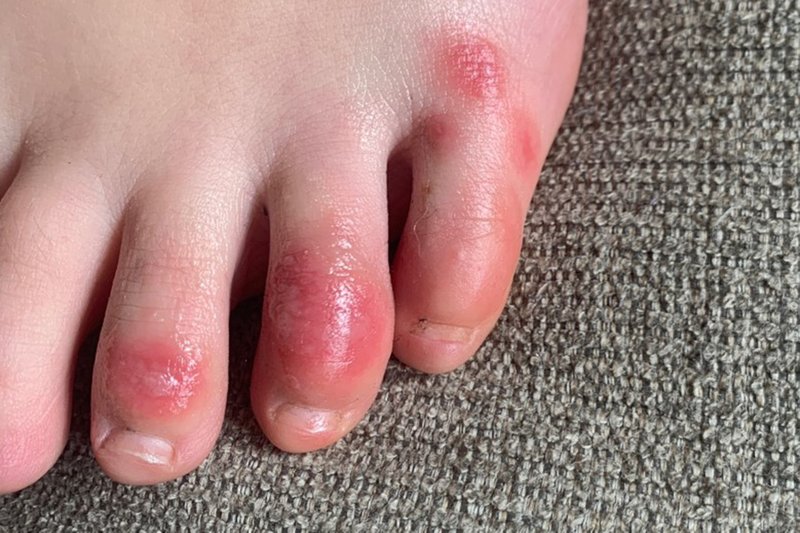
Skin doctors suddenly are looking at a lot of toes — whether by emailed picture or video visit — as concern grows that for some people, a sign of COVID-19 may pop up in an unusual spot.
Boston dermatologist Esther Freeman expected to see skin complaints as the pandemic unfolded — various kinds of rashes occur when people get very ill from other viruses.
“But I was not anticipating those would be toes,” said Freeman of Massachusetts General Hospital, who has viewed via telemedicine more toes in the last several weeks than in her entire career.
They’re being called “COVID toes,” red, sore and sometimes itchy swellings on toes that look like chilblains, something doctors normally see on the feet and hands of people who’ve spent a long time outdoors in the cold.
Don’t race to the emergency room if toes are the only worry, said the American Academy of Dermatology.
Earlier this month, it issued advice that a telemedicine check is the first step for people wondering if they have “COVID toes” and who have no other reason for urgent care. Doctors then should decide if the patient should stay in home isolation or get tested.
The most common coronavirus symptoms are fever, a dry cough and shortness of breath — and some people are contagious despite never experiencing symptoms. But as this bewildering virus continues to spread, less common symptoms are being reported including loss of smell, vomiting and diarrhea, and increasingly, a variety of skin problems.
In one report, dermatologists evaluated 88 COVID-19 patients in an Italian hospital and found 1 in 5 had some sort of skin symptom, mostly red rashes over the trunk. In another, Spanish doctors reported a series of 375 confirmed virus patients with a range of skin complaints, from hives to chickenpox-like lesions to the toe swellings.
Pictures of reddened toes and rashes all over social media and doctor chat groups have “already enabled the rapid recognition of skin signs by dermatologists. It is now time for rigorous science” to understand the link, Dr. Kanade Shinkai of the University of California, San Francisco wrote in a recent JAMA Dermatology editorial.
Boston’s Freeman directs an international COVID-19 registry for doctors to report cases of possibly virus-linked skin symptoms. Of 500 reports since late March, about half are chilblain-like spots on the feet, she said.
Chilblains, what doctors call “pernio,” are an inflammatory reaction. When pernio-like reactions appear in coronavirus-infected patients is one of many mysteries. For some people, it’s the first or even only symptom they notice. Others see the toe problem at the same time or even a few weeks after experiencing more common and serious COVID-19 symptoms.
It’s showing up in young people too, according to Dr. Amy Paller of Northwestern University, who is part of a pediatric dermatology registry also collecting images of patients’ toes.
Among the theories: Is it just inflammation triggered by an infection instead of the cold? Is the virus irritating the lining of blood vessels in the skin, or perhaps causing microscopic blood clots?
“The public health message is not to panic,” Freeman said, noting that most toe patients she’s seen haven’t become severely ill.
Are they contagious? “We can’t tell just by looking at your toes,” she said. Other medical conditions, such as lupus, can cause similar spots — another reason doctors should discuss each patient’s overall health and next steps for testing or other needed care.
___
Republished with permission from the Associated Press.



